There are challenges with gaining ROI from content.
Any content that focuses on trends has an expiration date.
SEO content can take months to rank and produce organic traffic.
There are too many channels to distribute assets, and it's not always clear what will produce results.
That's why from the beginning of the content lifecycle to the end, it's smart to have a process to distribute, repurpose, and recycle assets. You want to make content last longer and maximize engagement.
And with the amount of time and energy you put into content, you need to get a return to make it all worthwhile, right?
But in practice, a lot of brands aren't really getting any ROI from content repurposing. Because they rush through the process or don't put enough thought into the asset they're recreating.
Thankfully, with a better process, getting the most from a marketing asset doesn’t have to be difficult.
The Content Lifecycle: Getting More Engagement From Material And More ROI
The typical stages of a content lifecycle include:
- Discovery, Strategy, and Planning
- Content Production
- Publishing and Distribution
- Measurement and Analysis
- Refine and Optimize
To support these stages, you need a content strategy, a deep understanding of your customer, exceptional writers, a CMS like HubSpot or WordPress, and access to analytics tools. From the beginning, it's critical to have these aspects down so you can better serve your audience with a customer-centric approach.
Here at Lean Labs, we follow a customer-centric marketing approach that gives more context about this mindset.
Basically, the idea is that you create content that's tremendously helpful to your customer. You create content that you're proud of. There's never any room for something lackluster or stale.
Then, once you're confident you have these foundational elements, you can deploy the right process to get the ideal content lifecycle. Every asset gets you the best possible ROI. And this process only takes a few steps.
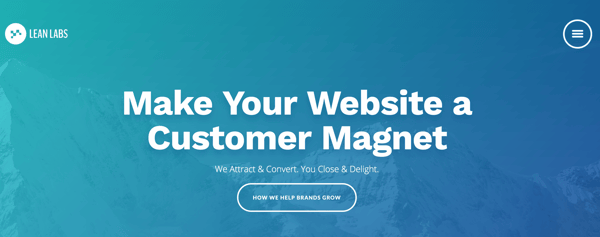 We exist to help brands grow.
We exist to help brands grow.
1. Exist To Solve A Specific Problem
It's tempting to brag about your team, your service, and your success, customers don't really care about that. They care about themselves. They want to find content that's going to help them raise their status and get things done.
That's why you want to focus on the problem that your customer is trying to solve, instead of your solution. To start, come up with a valuable asset that focuses on the overall, broad problem. The goal is to provide potential customers with a resource to help them gain more awareness around it.
For example, I love to travel, and I'm taking a trip to Ukraine. But I'm worried about being a solo traveler in Ukraine. A great resource for me would be an eBook or a video series that explains common challenges with traveling to Ukraine alone and how to overcome those problems.
During this stage, a lot of companies take an idea and run with it, but if you want to get the most from this high-value asset, consider a few other things:
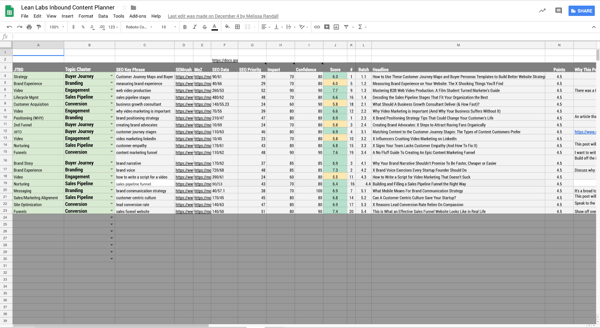
A content planner like ours (above) can help you assess potential keywords.
The Keyword
Choose a strong keyword for your asset. You want to find a phrase that people are searching for and ideally, doesn't have much competition. (You can use our favorite keyword tool for this. )
The Buyer Journey
Where does this asset fit within the buyer journey? Are you giving me this asset now, and trying to nurture me toward booking a tour with a Ukrainian travel company? What's the end game for me, the customer, and how does this asset act as a first step?
Content Consumption
How are you going to make it really easy to engage with this content? Will I need to reference this eBook offline from my phone? Would I prefer an audiobook version to listen to on the train?
The Competition
If Lonely Planet, Frommer's, and a few other top travel companies already had a Solo Travel Guide for Ukraine, is it worth it to create one just like it? How will yours stand out and be different? And when I say different, I mean useful.
In my experience, these high-value assets are a huge investment, so you want to execute them exceptionally well and take all of these considerations.
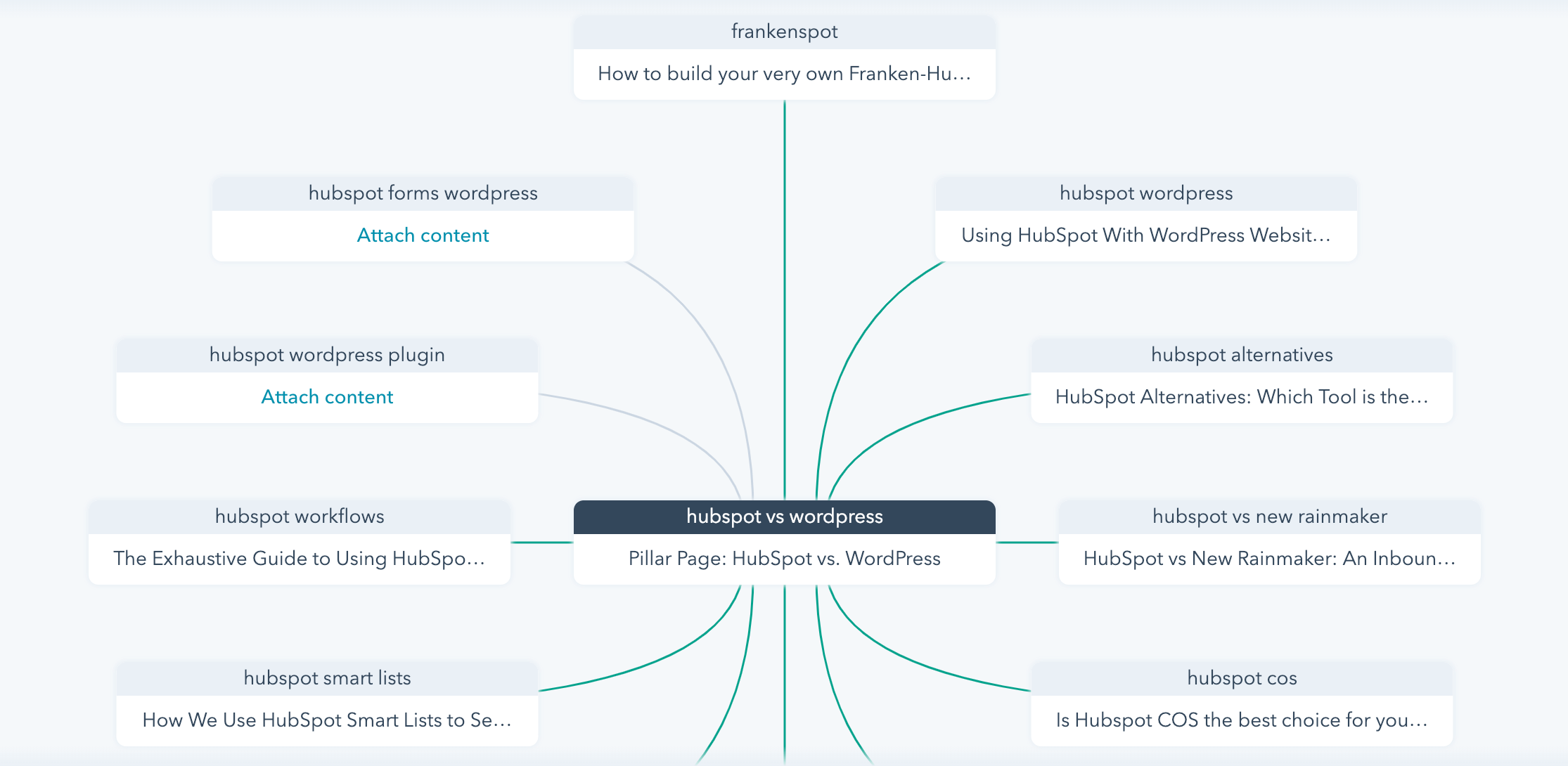
From our pillar page, HubSpot vs. WordPress, we found at least ten topics for additional blog posts.
2. Split YOUR Asset Into Highly Specific Post Topic Ideas
After you have your asset planned, you can create content that takes specific topics from the asset and turns them into more digestible pieces.
For example, you could write a blog post about the importance of getting a SIM card in Ukraine to access translator tools and maps, a video about finding safe accommodation, or an audio file with basic Ukrainian phrases.
All of that information is probably in the high-value asset, but by splitting it off, you're making it easier for your customer to find it. You can also provide more information in these posts that you may not necessarily be covering in your asset.
In your eBook, for example, you might include 3-4 essential Ukrainian phrases. But in your blog post, you can list 8-10 phrases, go into pronunciation, and link to some helpful tutorials. Then, you can conclude the post with context about the eBook and what else they can learn by downloading it.
You will also use this content to bait ideal customers. You'll hook them on one channel and bring them back to your website to download the asset.
- A YouTube video leads them back to your website.
- A blog post they find through Google has a CTA to the landing page where they can get the asset.
- A Soundcloud audio file includes a link in the description that explains the value of downloading the entire ebook.
From any substantial piece of content, you should be able to generate around 10-20 blog, video, or audio topic ideas.
3. Use Blog Posts To Inspire An Email Series
Once you have your blog posts and assets developed, you can use them to inspire an email series. Ideally, you'll send these emails to people who have had some engagement with your brand in the past six months to a year. You can also send it to a cold list, but you may not get much engagement.
For example, let's say that you wrote three awesome blog posts about getting around Ukraine safely alone, and the titles were:
- X Safe And Affordable Transportation Options In Kyiv, Ukraine For Solo Travelers
- X Tactics For Avoiding Pickpockets And Tourist Traps In Kyiv When You're Traveling Alone
- X Reasons That Solo Travelers Should Hire A Native Guide In Kyiv
From there, each of those posts could inspire an email with subject lines such as:
- Is it safe to use taxis in Kyiv? The answer might surprise you.
- Don't let this happen to you when you're traveling to Kyiv (it could ruin your trip.)
- Do you speak Ukrainian? If not, you might want to consider doing this before you leave…
The copy of each email can cover similar subject matter, then invite them to check out your blog post.
4. Spin Blog Posts Into Videos To Attract New Readers (And So Forth)
Every blog post, video, or podcast can be turned into something else.
For instance, you can take a blog post and easily repurpose it into a video. All you need to do is take the post, write a script and a storyboard based on it, then shoot it.
In your script and storyboard, you want to include:
- An enticing lead-in/intro to the video
- A question or idea that you will be answering/showing
- A specific example you can show on screen (if you can)
- At least 2-3 standalone quotes (these will come in handy later)
You can start by embedding the video into your post and publishing it on YouTube as well.
You also want to link to that video in a few older posts, too. You can also export an audio file of that video to create a listen-only version to also embed within your content.
It's a similar repurposing process for video and podcasts. You can get these transcribed and use the content to create value blog content.
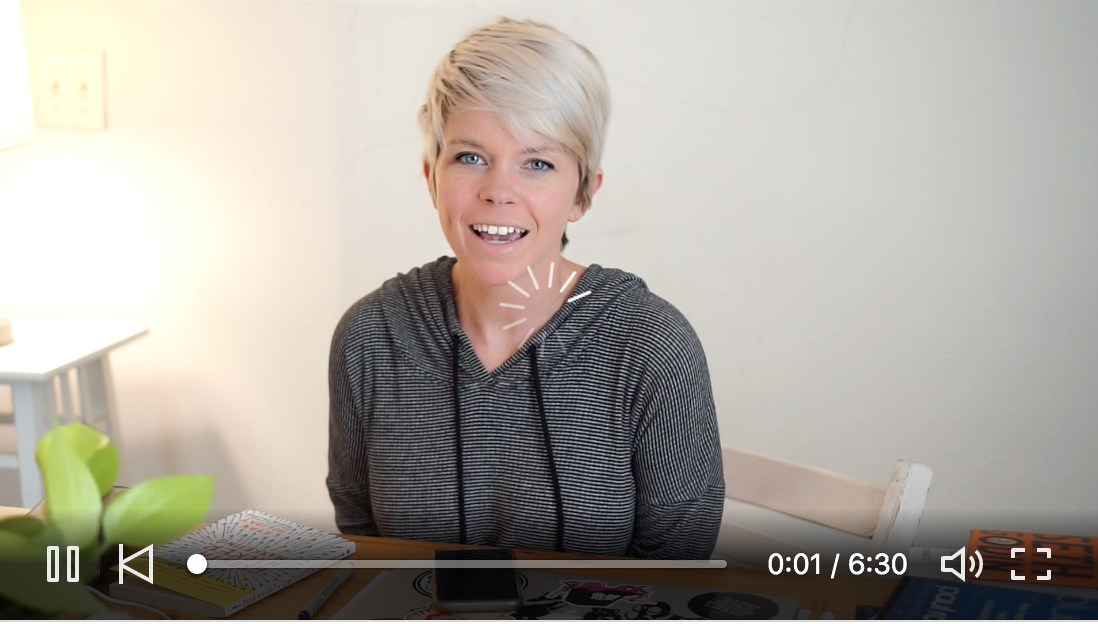 This video lives on LinkedIn, but can be easily split into videos for Twitter and Facebook.
This video lives on LinkedIn, but can be easily split into videos for Twitter and Facebook.
5. Edit Videos For Different Channels To Hook Social Followers
Now, video creation can be costly, so you want to make sure you're using video to it's fullest potential. Whenever you decide to make a video asset, you should also be planning to share clips from that video for Facebook, Instagram, and Twitter.
You could take any video and create:
- A 30-second teaser for Twitter
- A 60-second video for Instagram
- A 2-3 minute long video for Facebook
Although it would be easy to grab a quote during the editing process, you want to plan for this before you write your script. Since these videos are shorter, you want to make sure that whatever quote or snippet you choose makes narrative sense, even without the context of the full video. It also needs to hook someone in who is probably skimming through their news feed, so it needs to be pretty good.
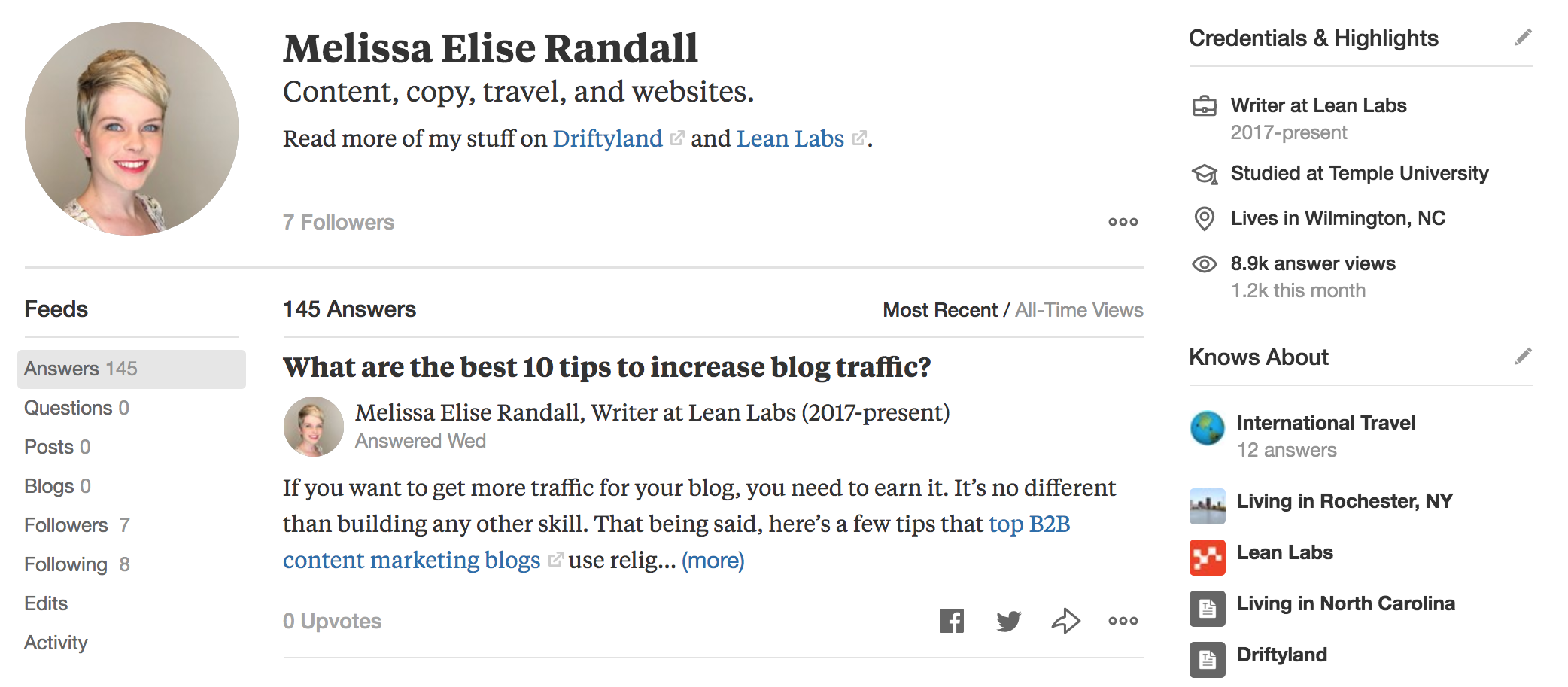 I have a pretty active Quora profile where I frequently link to my content.
I have a pretty active Quora profile where I frequently link to my content.
6. Build Social Bait To Drive To Higher Quality Content
I love creating social bait because it's pretty easy and fun to do. You can collect quotes from your blog posts and videos (again, consider whether or not they give proper context), and pass them to your designer to make posts for Facebook, Twitter, and Instagram. If you don't have a designer, you can use a free tool like Canva to quickly generate assets.
You can also bait people within forums like Quora and Reddit. The key is to only share a link within a thoughtful answer or question, and only when it feels appropriate. Spam on Reddit, and risk being massively downvoted.
(Source: I have been massively downvoted on Reddit many times.)
These are little snippets of content that will "bait" your potential lead into checking out more in-depth content. You can repost these again and again.
7. Connect Your Efforts To A Campaign
A lot of people launch content campaigns and leave them. If you want to get more from your content, however, you can't skip a critical step of the content lifecycle, which is to analyze the performance of an asset. Within a week, you may not see a significant trend or change, but over a few months, there can be a lot to learn.
From the beginning, you want to plan to study your content performance. If you use HubSpot, this is pretty easy. You can connect every asset of a campaign and study the traffic, leads, and opportunities generated from organic traffic, social content, and CTAs.
If you don't use HubSpot, you can set up goals in Google Analytics, and use tools like bitly, HotJar, and more. By measuring, iterating, and optimizing your assets, you can get more insights to make your next content lifecycle even more rewarding.
Getting More Engagement From Your Content Assets
At the end of the day, if you want to get more performance from content, you need to work at it and be creative. There's no easy way to cheat the system. You need to follow a process, stick to it, plan to repurpose and be consistent about sharing your content uniquely across platforms.
And most importantly, you need your content strategy to be laser focused on your customer. When you come from a place of expertise and trust, you'll get more value from your content than you ever expected.

 We exist to help brands grow.
We exist to help brands grow. 

 This video lives on LinkedIn, but can be easily split into videos for Twitter and Facebook.
This video lives on LinkedIn, but can be easily split into videos for Twitter and Facebook. I have a pretty active Quora profile where I frequently link to my content.
I have a pretty active Quora profile where I frequently link to my content. 


